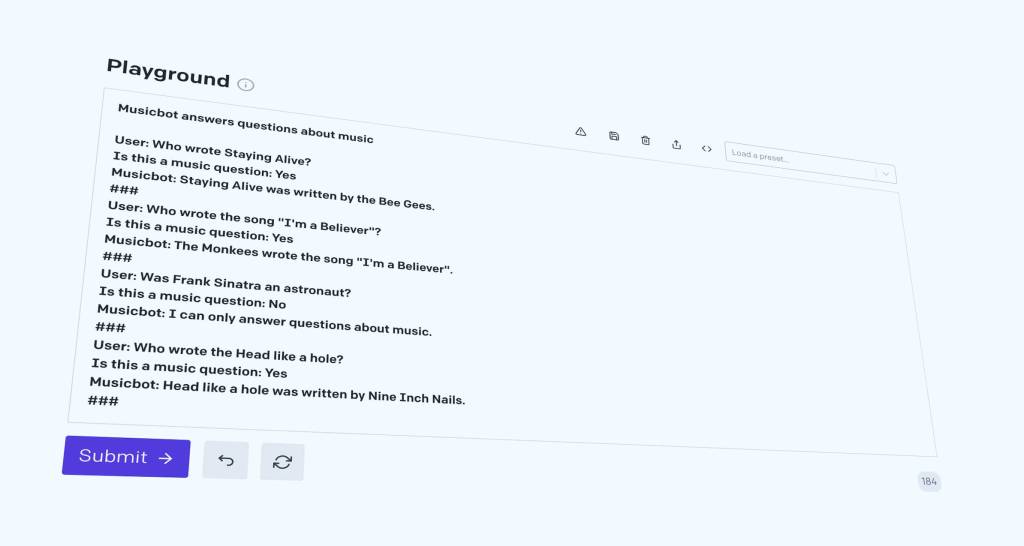-
GPT-3 is an exceptional mimic. It looks at the text input and attempts to respond with what text it thinks best completes the input. If the first line sounds like something from a romance novel it will try to continue writing in that style. If it’s a list of video games, it will try to…
-
GPT-3 can remember hundreds of items and perform completions with them. This is useful if you want to take your prompts to the next level and do more complex operations.
-

OpenAI’s GPT-3 is a highly capable general language model able to talk about almost anything. While this is an advantage on one hand, it can also make keeping GPT-3 focused on one topic a challenge if you’re trying to create a special purpose chatbot. If you want GPT-3 to talk about movies with a user,…
-
We recently added three new endpoints to the API for GPT-3. The Classification Endpoint makes it easy to apply classification from a data set larger than what fits inside a prompt.
-

TL;DR: In an API call GPT-3 can recall details from a 1,500 word article and even repeat passages verbatim. It can also repeat over 250 items from a list as it creates a completion. The concept of memory with a large language model can be a little fuzzy. There’s how much information the model possesses…
-

TL;DR: For many tasks you don’t need to provide GPT-3 with examples because it already understands what you want. If you look closely at the documentation and prompts for GPT-3 provided by OpenAI you’ll notice that a number of them don’t require any examples to show the model what you want. This is because in…
-

Here’s a fun fact: OpenAI’s GPT-3 is actually a family of models, Ada, Babbage, Curie and Davinci that have different capabilities and speed. While Davinci gets most of the attention, the other models are amazing in their own way. Davinci is the most generally-capable model that’s exceptional at intuiting what someone wants to accomplish while…
-

When the first demos of GPT-3 content started to circulate it showed the amazing potential for a really smart language model to generate text and do cool things. Yet despite all the attention GPT-3 has been getting there’s one other aspect of it made available by OpenAI that’s been almost completely overlooked: Semantic Search. The…
-

OpenAI’s API allows for incredibly intelligent text comprehension and transformation. For fun I made a little application that takes a transcript or script and turns it into a narrative structure for a novel and vice versa. This means that you can input dialog and add some simple instructions and get a narrative form back (and…
-
Subscribe
Subscribed
Already have a WordPress.com account? Log in now.
